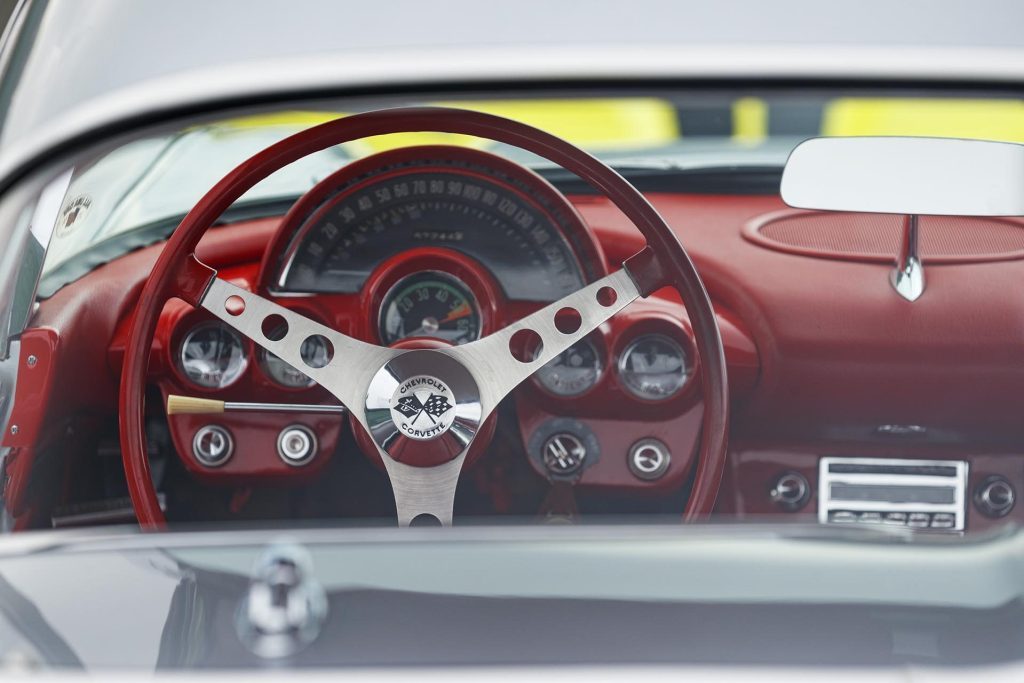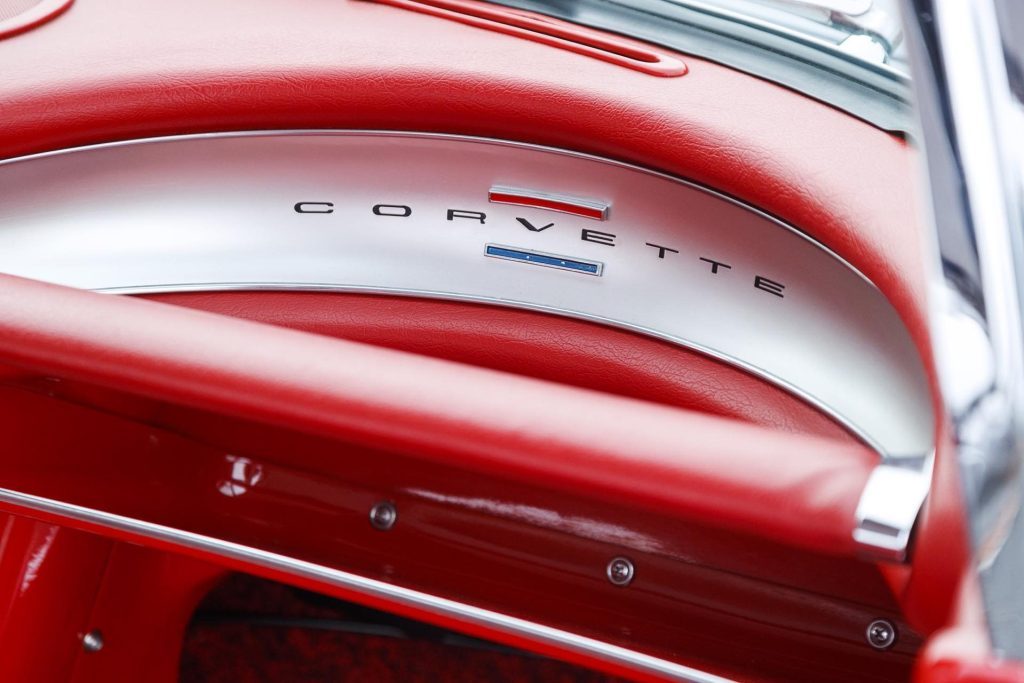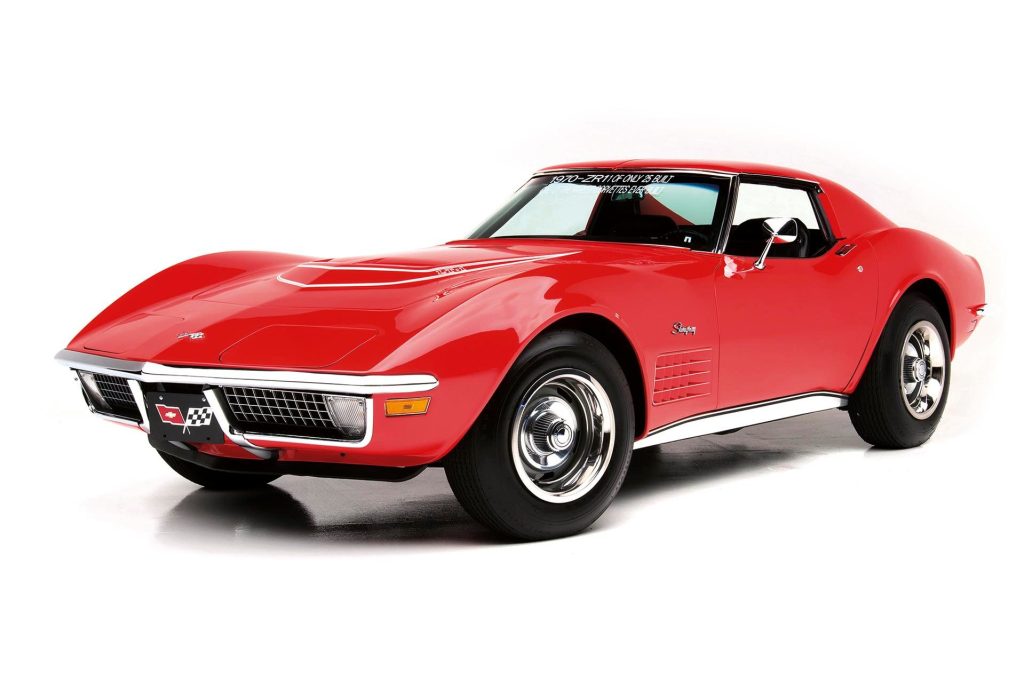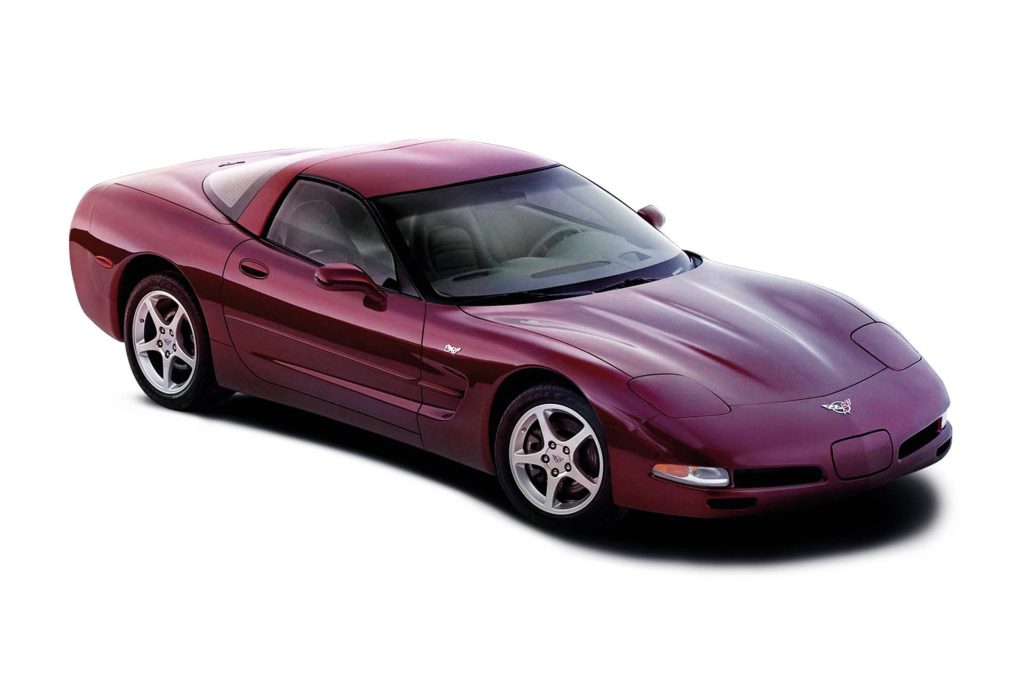1972 Corvette Stingray LT-1
After a chance encounter, the first New Zealand owner of this American classic gets reacquainted with one of the most...
The Chevrolet Corvette has a storied history, full of highs and lows. The latest generation C8 is certainly a high point, a transformational change for ‘America’s Sportscar,’ abandoning its traditional layout to adopt a mid-engine approach. And it’s one that GM is taking to the world for the first time with the introduction of right-hand drive production from the factory. We rate this new C8 for it’s a unique proposition. Few, if any, rivals offer the same performance, dynamics and exotic looks for the money asked. And it’s no brash Yank. Okay, it’s pretty out there with its lurid yellow paint scheme, the racing stripes doing it few favours either, but as good as this is at carving off corners, it’s also something you might be able to live with every day, it’s that civilised.

But its mix of performance and civility didn’t happen overnight. The first Corvette was a far cry from this. And as such, this long-lived legend was almost killed off in its infancy.

The idea of the Corvette was conceived by Harley Earl, GM’s styling guru of the era. With the US economy enjoying the post-war boom, he recognised the need for America’s biggest car maker to offer a sports car able to rival those offered by the Europeans, albeit one with a slightly more ’affordable’ price tag. He managed to convince those in charge and so ‘Project Opel’ got underway late in 1951. In quick time, GM rolled out three prototype ‘sports cars’ in 1953. One was the classic two-seater roadster that would eventually become the Corvette, which was shown alongside a fastback ‘Corvair’ coupe and a two-door wagon, dubbed the Nomad. Only the roadster would be greenlighted for production after the initially positive public reaction. The Corvette, named after the class of Navy vessel, would be on sale just six months later.

Being a GM project, the bean counters dictated the terms of the project, and so parts sharing was a given. The C1 Corvette was denied a lightweight, racecar-inspired chassis and instead would make do with the repurposed bones of the General’s regular passenger car line-up. This included the retention of the live rear axle which is why the C1s are sometimes referred to as the ‘solid axle generation’. GM’s passenger car chassis was reconfigured for the Corvette to help place the engine further back in the bay. Along with improving the weight balance, this also enhanced the styling proportions, allowing the designers to give the Corvette the now classic treatment of a long bonnet with short rear overhang.

Because development time was in short supply, GM used a then novel material for the body parts in order to speed the design process, that being fibreglass. And as it turned out, the glass fibre body was one of the things people liked about the Corvette, the cutting edge material giving it a point of difference. But underneath that sleek styling and those futuristic plastic panels, things weren’t so rosy.


The first C1s were lumped with a 235 cubic inch inline six, also borrowed from the regular GM line-up. It was treated to a new cam and a higher compression ratio while a trio of carbs was slung off the side to boost the horsepower count to 150. Making matters worse, GM had no manual transmission available rated to handle that much power and so the IL6 was married to the two-speed Powerglide.

The first Corvette was made in 1953, some 300 produced in Flint, Michigan. These were cobbled together and the quality was said to be iffy at best with poorly fitting panels and water leaks being common. It was fairly porky at 1300kg and, with its mediocre powertrain, took 12sec to crack 100km/h. With drum brakes all round, it probably required just as long to stop as well. Factor in aspects such as a lack of wind-up windows and adequate weather protection from the flimsy hood, and buyers weren’t so keen. It was also more expensive than GM originally hoped at just over $3000.

The Corvette wasn’t quite the hit initially then but GM stuck with it. They had to really as Ford rolled out the Thunderbird in 1955 and GM needed a competitor in the same space. Helping up its ante, the Corvette received a heart transplant that same year with the introduction of the GM small block, the 265CID V8 giving it close to 200hp. The engineer in charge of putting the heartbeat into America’s sports car was the famed Zora Arkus-Duntov. He would later be known as ‘the father of the Corvette’, heading up GM’s performance division and concocting some of the most desirable examples. Coupled to a three-speed manual and a shorter final drive, the small block powering Corvette was capable of generating much more respectable pace. In 1956, the model gained new styling with its contrasting body scallop, and GM took on the complaints of inadequate weather protection by adding roll up windows, a better folding roof and the option of a hardtop. The Corvette could only be had with bent eight power by now, the Blue Flame six extinguished, with power output ranging from 210 up to 240hp if you optioned the V8 with power ups like a hi-po camshaft.



In 1957, GM bumped the displacement of the V8 up to 283 cubes and, for those with deep pockets, fuel injection became an option (these ‘fuelies’ are now sought after), and so too a four-speed manual.

For 1958, GM added the twin headlight treatment and a toothy chrome grille, both styling elements all the rage at the time. Thankfully the big grille didn’t last long and in 1961 was replaced by a more discreet opening, with the rear end gaining twin tail lights, a feature that would continue on all Corvettes going forward for the next six decades. In the last year of the C1, GM chucked its 327 V8 at it and, with fuel injection, a hot cam and solid lifters, it was good for a claimed 360hp, which meant output had more than doubled since its inception.


This superb example of a 1961 C1 is said to be a symptom of an illness that its owner suffers; that being a penchant to collect fine cars. It was a machine he aspired to own in his youth and a trip to the US in 2017 planted the idea of actually securing one. He tells us that he and a group of friends took their historic single seaters to the US, racing all over the country and, as such, they spent some two months travelling 17,000km road tripping between the famous circuits. Passing the miles away, they got to talking about which American cars they would buy. After many hours mulling over the candidates, the trio made their decisions, with one opting for a Bullitt Mustang, the other a C7 Corvette, and our owner choosing the C1. Their travels had them stumbling upon a Corvette restorer in Illinois, from whom our owner tried to buy a C1 but ultimately the deal fell through. With the plan to buy a C1 now in motion, a friend spotted this 1961 example in NZ on Trade Me.

It was sold new in Japan, and the first Kiwi owner bought it privately and imported the car in 2011.

That custodian undertook what our owner describes as a cosmetic restoration, the body and interior being in top shape, but the mechanicals he described as ‘completely knackered’. So he set about sorting all those bits. It’s now a very tidy, low mileage example, having just 67,000 miles on the odo. He admits that there are a few things that are not 100 per cent period correct, and there’s an issue with the steering box that still needs correcting. But, as he puts it, it’s not a concours machine, more something he uses when the weather is right, and he loves ‘just tooling about in it’. He says he particularly likes the Corvette’s V8, ‘a wonderful thing to listen to, such a character and a joy to drive’.


As to the C8, he thinks it’s incredible value; “I can’t believe the performance for the price.” He’s not completely sold on the styling however, the way they have highlighted the intakes and spoilers and he would prefer it to be a bit more discreet. However, he realises it is being sold to a global market, targeting a certain buyer. He appreciates that the Corvette nameplate has been true to its DNA, still a sports car that stands apart from the GM line-up.


How much longer will the Corvette line live on? One of the many reasons to adopt the new mid-engined layout is to better incorporate electrification and a new halo model is set to introduce just that. There’s a 1000hp plug-in hybrid on the way, dubbed Zora (remember him) which includes an electric motor or two on the front axle and a twin turbo V8 in the back. And you’d imagine a hybrid would be offered on lesser variants as well to meet incoming fuel economy regulations in the US. Beyond that, we know that the Corvette will have to go all electric eventually to fall in line with GM’s all-electric directive, which is set for 2035. Here’s to a few more generations yet then.

Corvette timeline

C2 1962-1967
While Arkus-Duntov dabbled with a mid-engined prototype, the second generation Vette remained a front-engined machine. But the model line-up was fresh with the introduction of the Sting Ray coupe. The C2 also debuted independent rear suspension and in 1965 four wheel discs were added. Extra power came from increasing displacement with ‘big block’ V8s offered, first with the 396 and then the 427. Other firsts included air con and the Z06 performance handling option.

C3 1968-1982
In true GM style, the C3 was blessed with new Coke-bottle inspired styling but rolled on a made-over chassis. The T topwith removable roof panels debuted. The venerable 350 Chev became the base engine option but performance options were plentiful including the all-alloy ZL1 V8 offering as much as 500hp. However, moves to lead-free petrol and the need for catalytic converters saw Corvette horsepower plummet in the mid-seventies, with the base model rated at just 165hp and the big block engines discontinued. Safety regulations also saw the convertible being dropped and the styling ruined with the fitment of impact bumpers.

C4 1984-1996
Knowing the Corvette’s twenty-year-old underpinnings could be flogged no longer, GM’s C4 was all new for 1984. Aluminium suspension componentry was new, though it was still suspended by the unique transverse leaf springs. The convertible made a comeback, as did a reengineered Targa top. Later model C4s got ABS and traction control, keyless entry and runflat tyre tech. All C4s had a 350 cube V8 but output was increased from 210hp in 1984 to 330hp by 1996. The C4 was one of the first cars with a six-speed manual. The top C4s were the ones optioned with the ZR1 performance pack which included the handbuilt, 375hp LT5.

C5 1997-2004
With the sportscar game moving on rapidly, GM was forced to give the C5 a new chassis, one that delivered 50/50 weight balance while adding electronic helpers like stability control. Power came from the alloy 5.7-litre LS1 with 345hp in base trim. Initially only offered as a coupe, the convertible soon followed as did a fixed roof coupe version, which was used as the basis for the Z06. This used the LS6, a worked version of the standard LS1 to deliver over 400hp while GM threw uprated suspension and brakes at the beast too.

C6 2005-2013
The C6 was an evolved C5, the chassis tweaked, the interior improved, more equipment added. It still had a four-speed auto but a six-speed unit was introduced later in the model cycle. A revised V8, now up to 6.0-litres and called the LS2 offered 400hp and more torque. The C6 added two high performance models; the 7.0-litre, 505hp Z06 had a track focus while the ZR1 made a comeback. This time it was powered by a 640hp supercharged LS9, which pushed the Corvette beyond the 200mph barrier for the first time.

C7 2014-2019
The C7 continued the front engine, transaxle layout of its forebears, while the line-up remained familiar, although the Stingray nameplate was revived. Power came from an all-new 460hp LT1 V8, still a pushrod design but one with VVT, direct injection and cylinder deactivation. A seven-speed manual was offered, along with an eight-speed auto. While still made of fibreglass, it also added carbon bits and more alloy in the chassis. The Z06 returned with wide body styling and a 650hp supercharged LT4. The crowning glory of the C7 was the bewinged ZR1 with 750hp.
You may also like…
After a chance encounter, the first New Zealand owner of this American classic gets reacquainted with one of the most...
To enliven gm's faltering image, the us automaker turned to lotus engineering. Together they created one hell of a performance...


